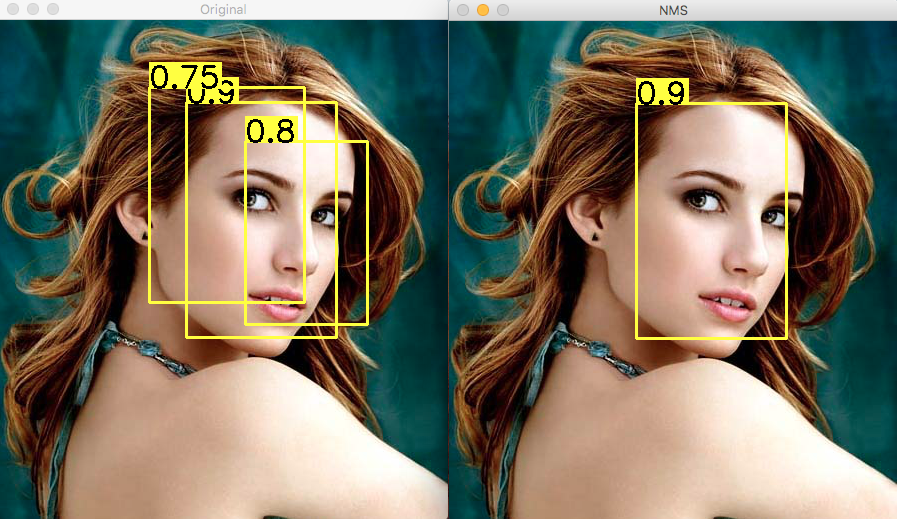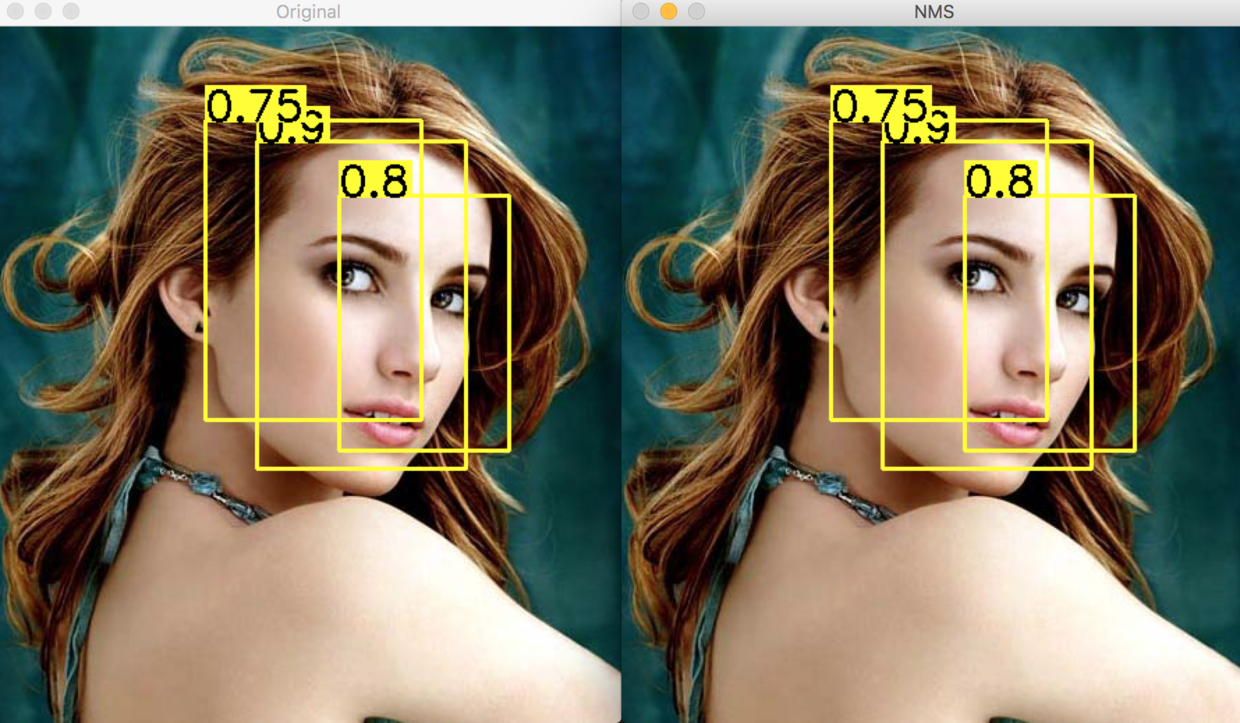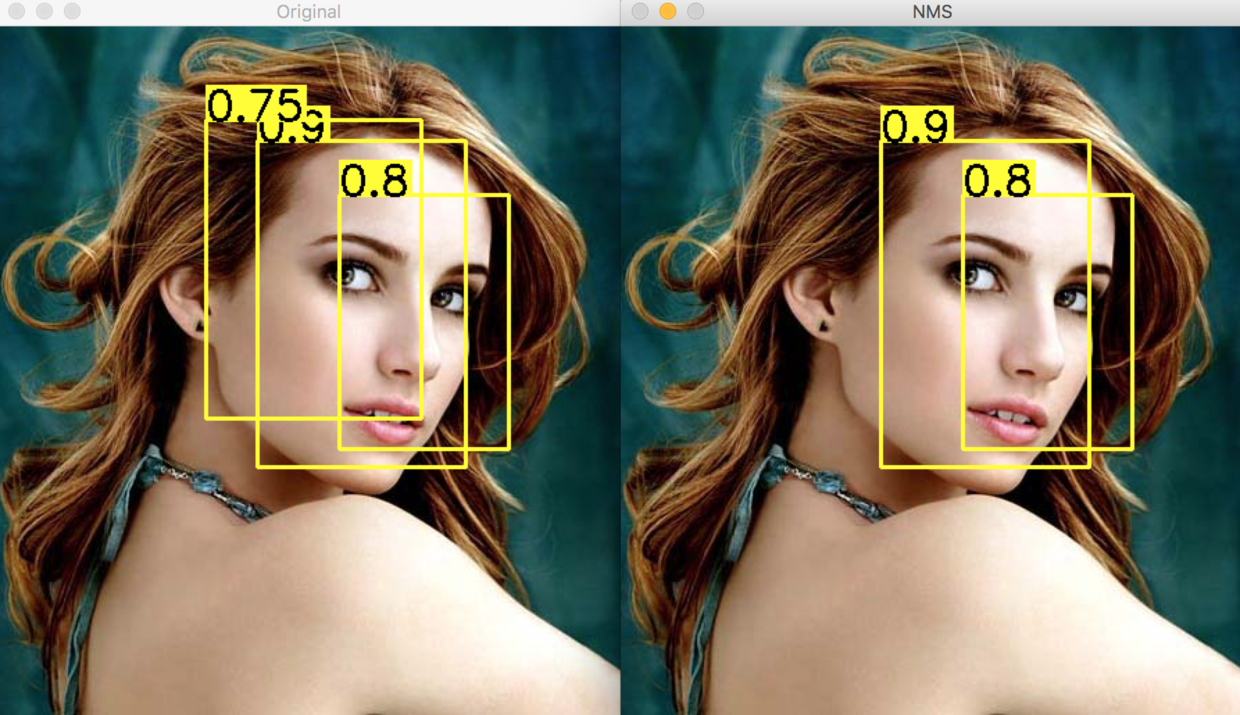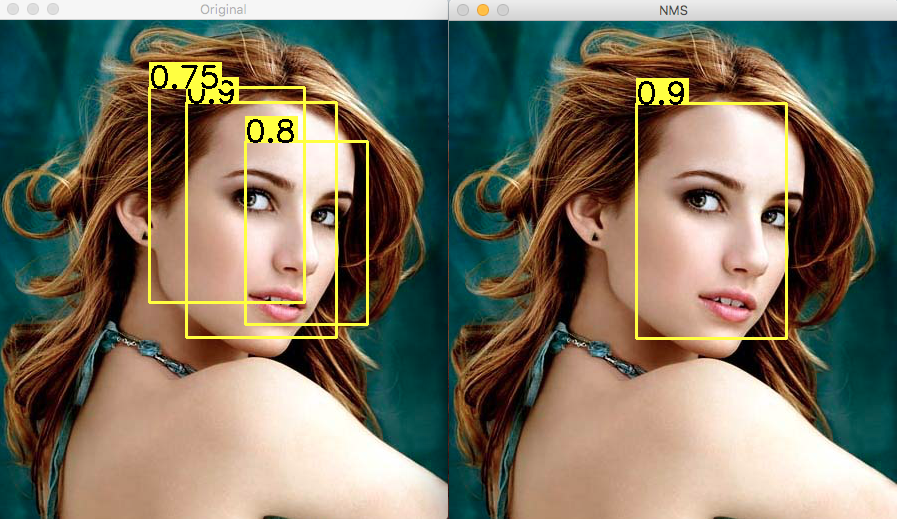文章作者:Tyan
博客:noahsnail.com | CSDN | 简书
1. 什么是非极大值抑制
非极大值抑制,简称为NMS算法,英文为Non-Maximum Suppression。其思想是搜素局部最大值,抑制极大值。NMS算法在不同应用中的具体实现不太一样,但思想是一样的。非极大值抑制,在计算机视觉任务中得到了广泛的应用,例如边缘检测、人脸检测、目标检测(DPM,YOLO,SSD,Faster R-CNN)等。
2. 为什么要用非极大值抑制
以目标检测为例:目标检测的过程中在同一目标的位置上会产生大量的候选框,这些候选框相互之间可能会有重叠,此时我们需要利用非极大值抑制找到最佳的目标边界框,消除冗余的边界框。Demo如下图:

左图是人脸检测的候选框结果,每个边界框有一个置信度得分(confidence score),如果不使用非极大值抑制,就会有多个候选框出现。右图是使用非极大值抑制之后的结果,符合我们人脸检测的预期结果。
3. 如何使用非极大值抑制
前提:目标边界框列表及其对应的置信度得分列表,设定阈值,阈值用来删除重叠较大的边界框。
IoU:intersection-over-union,即两个边界框的交集部分除以它们的并集。
非极大值抑制的流程如下:
根据置信度得分进行排序
选择置信度最高的比边界框添加到最终输出列表中,将其从边界框列表中删除
计算所有边界框的面积
计算置信度最高的边界框与其它候选框的IoU。
删除IoU大于阈值的边界框
重复上述过程,直至边界框列表为空。
Python代码如下:
1 | #!/usr/bin/env python |
源码下载地址:https://github.com/SnailTyan/deep-learning-tools/blob/master/nms.py
记得给个Star。Demo原图在README.md里。
实验结果:
- 阈值为0.6

- 阈值为0.5

- 阈值为0.4


